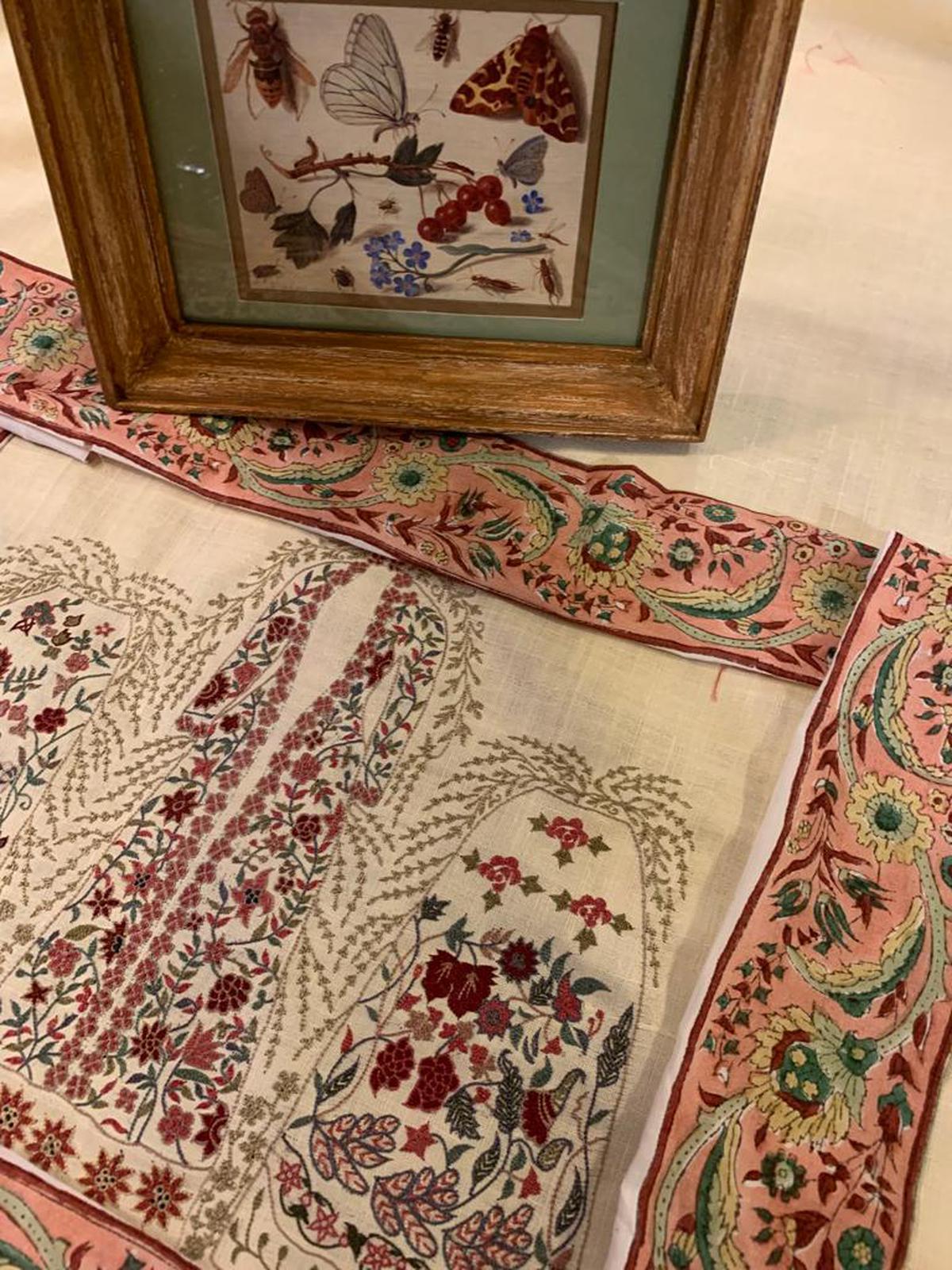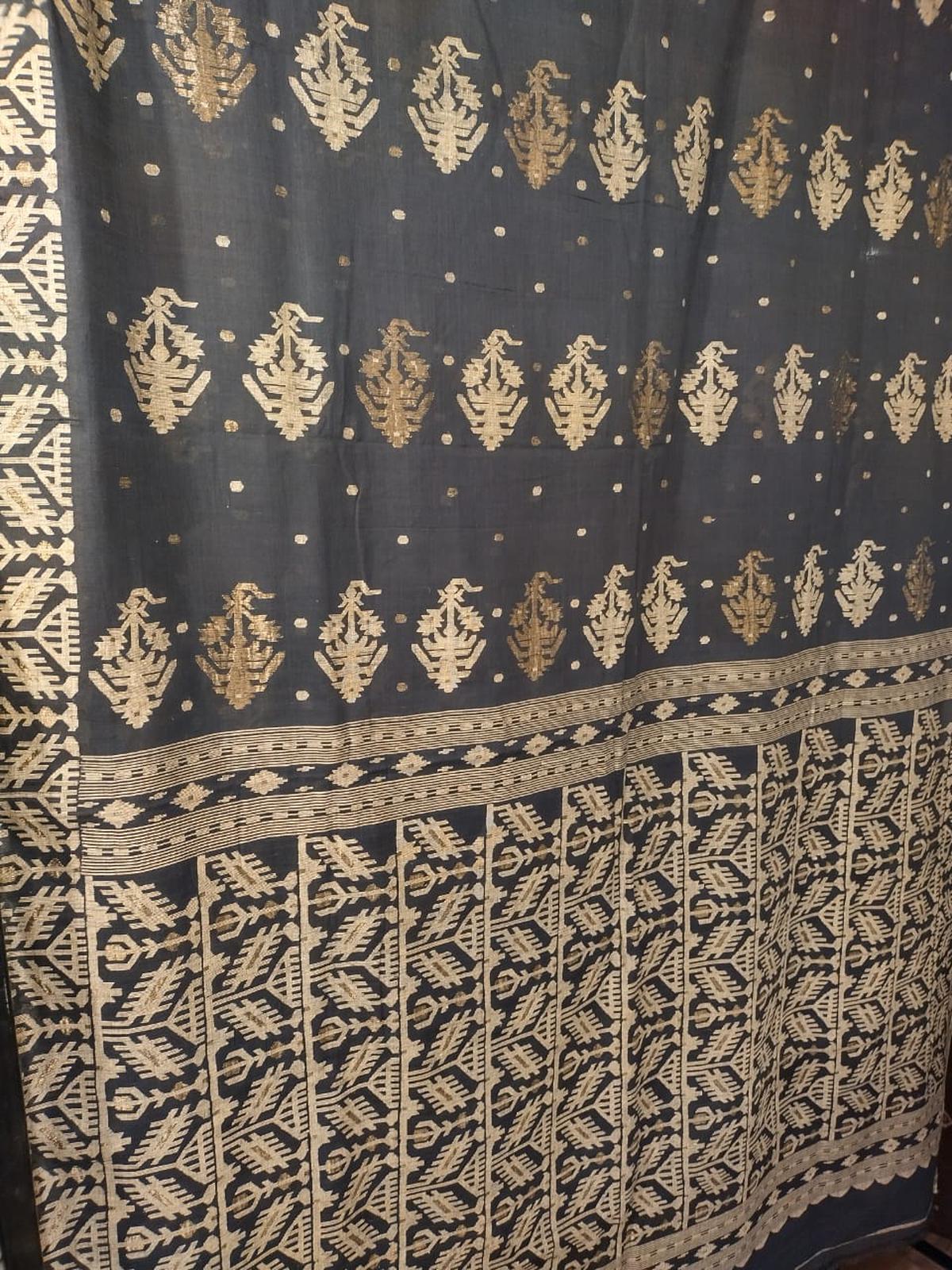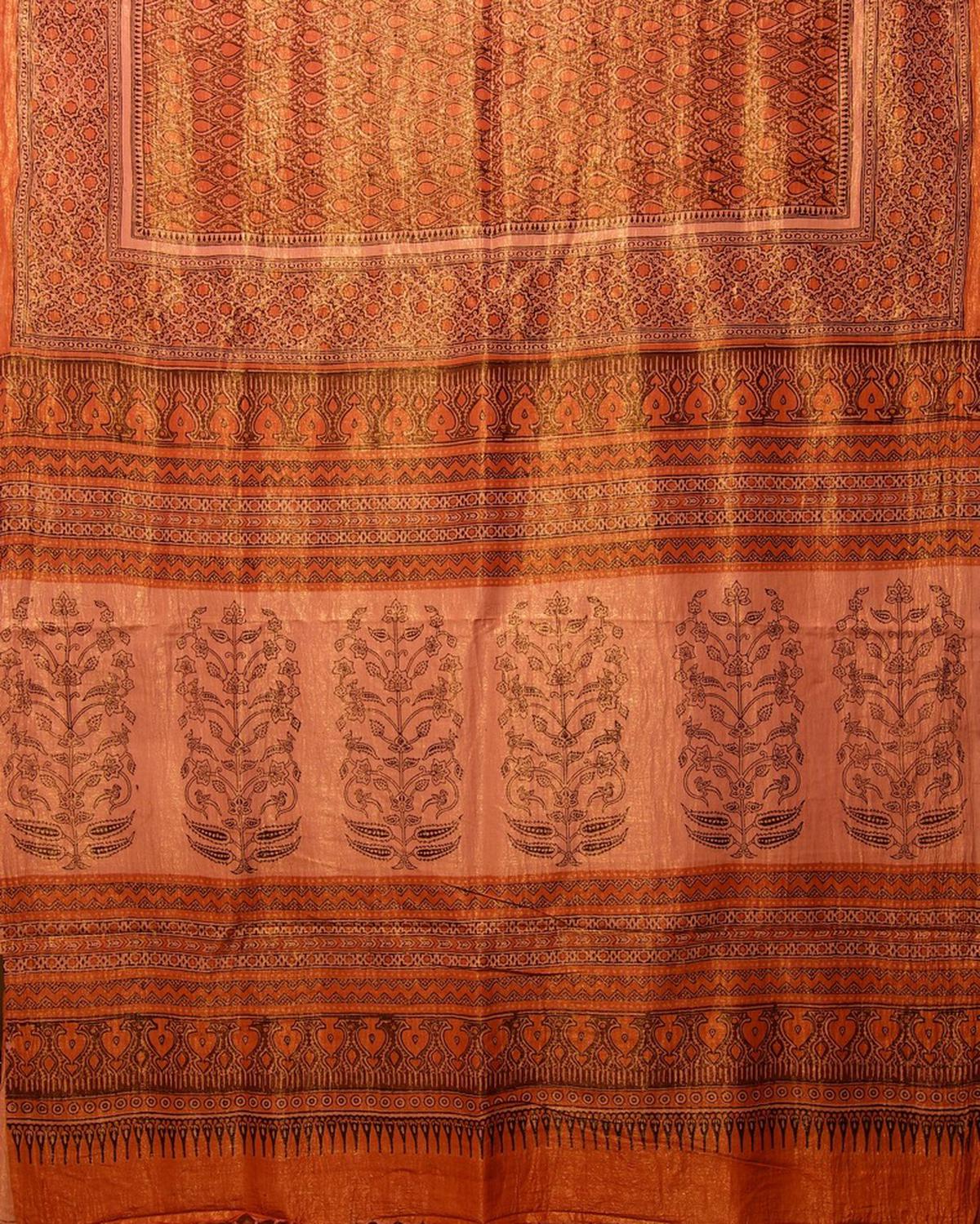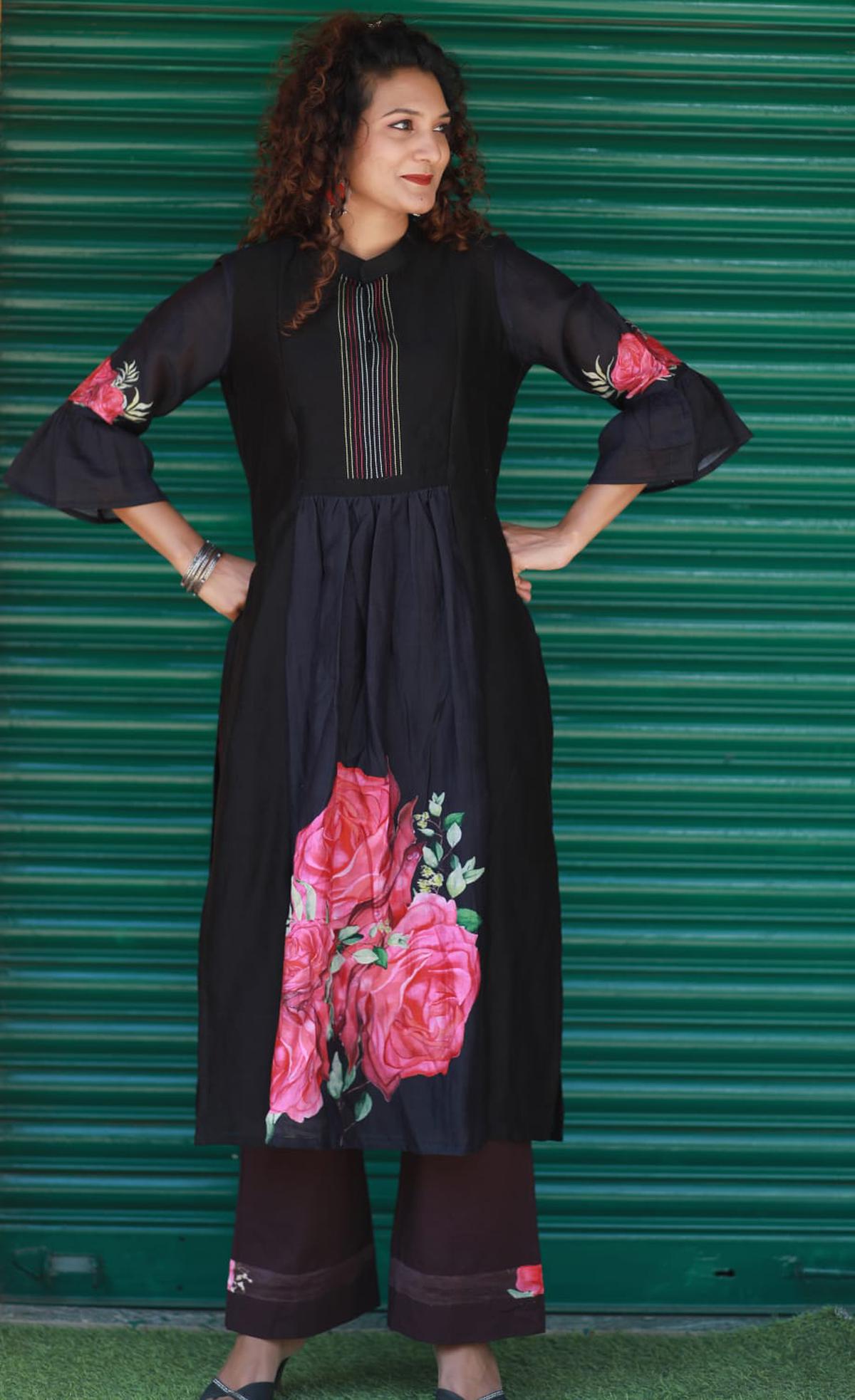Did you know that Dhaka is not the only place that produces muslin? Or that in Santipur, West Bengal, there is a way to starching yarn that turns the threads “as stiff as a bone”? These are some of the textile stories that regale visitors at Chintz Muslin and the Forgotten Queen, an ongoing exhibition of textiles from a bygone era.
Collated by Vishambhara, a collective helmed by textile expert Purvi Patel it has Kolkata-based Ssaha Works and Chennai-based Aksh Weaves as partners. This is their third show and, in Kochi, they have collaborated with Bengaluru-based Tina Eapen who recreates the English rose motifs in saris in Kerala and Jaipur’s Shilpi who works with indigo dyes and Sanganer block prints for this show.

Chintz embroidery
“Vishambhara supports skilled artisans with design interventions based on history and research,” says textile expert Purvi who works with 22 artisans in her studio in Bengaluru. Over three decades she has retraced and recreated early and mid-19th-century needlecraft. Kochi, she says, is an appropriate venue for a show on 17th-century chintz, as “ along with spices, textiles too were traded from here. The colonists were patrons of chintz.”
Embroideries of yore
Purvi’s collection is inspired by the 19th-century Baluchi tapestry and the Mochi and Kutchi nomadic embroidery. She has also found inspiration in art pieces at the Calico Museum in Delhi, the Victoria and Albert Museum (V&A) in London, and the Metropolitan Museum of Art (Met) in New York.
“Look at the mango motif in Indian culture. There are so many other versions of the mango, like the elongated one, which finds expression as the paisley in European chintz.“ says Purvi.

The Purna Kumbha motif
Santipur weaves
Amitra Sudan Saha and his team from Ssaha Works have been working with the weavers of Santipur, near Kolkata, to revive the art of weaving, starching and dyeing. “Only women were engaged in starching the handspun yarn, which was like a spider’s web. Rice gruel was applied to them and the threads then turned stiff as bone,” explains Amitra, adding that Santipur saris and dhotis were daily wear, known for their sturdiness.
Ssaha is showcasing the famed muslin jamdani to break the myth of the Dhakai jamdani. Amitra says that muslin is “produced across the entire Brahmaputra belt, including Bihar” and not just in Dhaka. “It has various names like mulmul, nayansukh, khaddar…” Ssaha has revived the pre-Mughal motifs like the Lakshmi Ghot or the pot of plenty. “Down the years, the motifs have had various variations, according to the weaver’s imagination. Amitra’s team works with 150 community weavers, engaged in the 13 processes used to create a sari. “We started our restoration project, Gunnavalli, after the pandemic.”
Coromandel coast textiles

Kodalikaruppur block print
For the past six years, Shreya Mishra’s Chennai-based Aksh has worked to recreate the textiles of the Coromandel Coast. In Kochi, the team is exhibiting the fabrics used by the Nayaka rulers of Thanjavur.
The Kodalikaruppur fabric — once used as saris, turbans and dhotis — had limited production between the 17th and 19th centuries, as they were meant only for the royal family. With British rule, the royal looms were stopped and some of the fabrics and dresses now exist only as museum pieces in the Met, V&A, Philadelphia Museum of Art in Philadelphia, USA and the Calico Museum in Ahmedabad. “The speciality of the sari is that it is hand drawn, like kalamkari, and resist-dyed on top of a jamdani,” explains Vipindas, co-founder, Aksh. “We have recreated the version and used block printing on it.”
The Aksh team has also restored the Nayaka kalamkari that originated in Ariyalur and Thiruvidaimarudur when they got the GI tag in 2021. “We identified motifs in the European floral chintz,” says Vipin. They are currently working on reviving a deep red that originated in Madurai. On show is their range of saris, kurtis and fabrics.
The English rose

The English rose was a very popular motif on saris worn by churchgoers in Kerala. Tina Eapen recalls, “ I grew up watching these flowers embroidered on saris, and my collection in pastel shades celebrates it ” The Bengaluru-based designer has recreated the motif on natural fabrics like Bhagalpuri linen, Chanderi and the Kerala kasavu and also created ‘smart dresses’ in Indo-Western style.
Indigo, the blue gold
“Indigo, also called ‘blue gold’, was a much-sought-after commodity between the 17th and 19th centuries,” says Brij Ballabh of Shilpi, the award-winning Jaipur-based textile brand that works with indigo dyes and Sanganer block prints. Today, 80 lakh tonnes of synthetic indigo are being used globally. Brij, who has been researching natural indigo for eight years, says Shilpi’s focus is on sustainability and taking the traditional Sanganeri printing forward. Along with fabric and dresses, he is also showcasing indigo cakes to raise awareness .
( At David Hall in Fort Kochi until May 20)
Stay connected with us on social media platform for instant update click here to join our Twitter, & Facebook
We are now on Telegram. Click here to join our channel (@TechiUpdate) and stay updated with the latest Technology headlines.
For all the latest Life Style News Click Here
For the latest news and updates, follow us on Google News.
